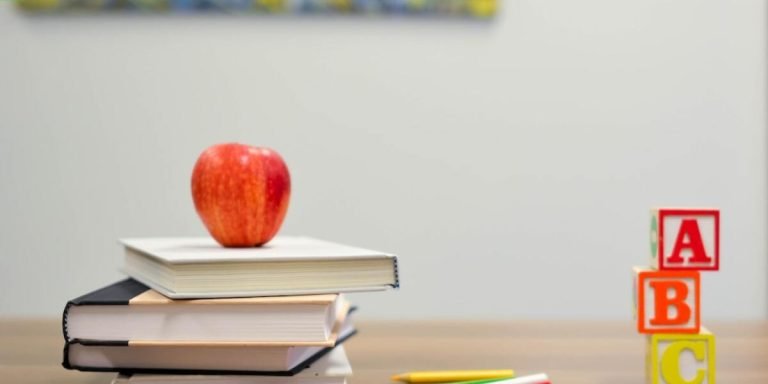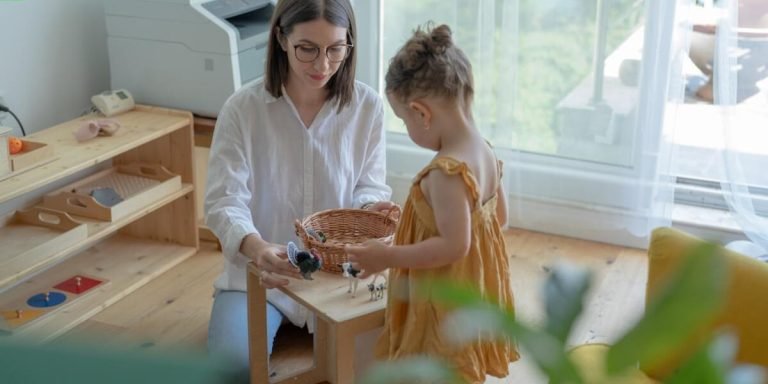Special Ed Classes: A Comprehensive Guide for Parents and Educators
Navigating the journey of “Special Ed Classes” can be a daunting task for both parents and educators alike. This comprehensive guide is designed to serve as an essential resource, offering deep insights into this specialist arm of education which often goes unexplained or understood. We’ll delve into what makes these classes unique, the teaching strategies employed in them, and how they cater more aptly to children with diverse needs.
The focus will not only be on classroom instruction but also on specialized resources that prove indispensable in making Special Ed Classes fulfilling for students. Education professionals may find varying levels of support within different school systems when it comes to special ed classes – our aim here is less about system critique and more towards shedding light upon supportive tools beneficial across board irrespective of funding disparities.
Did you know?
Did you know? According to the National Center for Education Statistics, over 7 million U.S. students receive special education services — that’s about 14% of all public school students!
Understanding Special Ed Classes: Navigating Resources and Support
Understanding special ed classes requires more than just recognizing the need for differentiated instruction. It’s about incorporating the right educational technology tools that allow young learners to reach their potential. In this digital age, proper exploration of resources and support systems is paramount.
Educational technology has transformed how Special Education (SPED) programs are delivered. Interactive whiteboards, tablets with specialized apps, assistive tech – all these have become standard elements in special ed classrooms around 2023, creating unique learning opportunities tailored for each child’s needs.
However, it isn’t only about hardware and software; there exist vast networked communities offering an array of online accessibility features along with remote learning possibilities designed specifically for students requiring extra assistance. These modern solutions not only make information accessible but also stimulate engagement among children who might face difficulties in traditional classroom settings.
Parents and educators must actively participate to ensure these innovations meet inclusive education goals while supporting individual academic growth in special education classes. They need to navigate through resources and provide robust support for fostering successful outcomes, as well as promote digital integration strategies in special education curriculums. Integrating technology into education empowers future generations by making knowledge equally achievable for everyone, no matter their individual challenges.
The Importance of Individualized Education Programs (IEPs)
Special Ed classes, or Special Education Programs, have become the backbone of providing targeted resources and support to children who need it most. As we delve deeper into 2023, utilizing technology in education has seen utmost prioritization for streamlining these programs.
One quintessential example is the effective use of Individualized Education Programs (IEPs), designed with a child’s unique needs at their heart. Herein lies their weight – IEPs create personalized educational pathways tailored specifically around an individual student’s strengths and developmental areas that require additional attention.
Traditionally paper-based tasks like assessments are now being replaced by digital tools which can be more accurate as well as time efficient. This saves teachers countless hours they would otherwise spend marking papers allowing them to focus on developing enhanced learning strategies.
Moreover, using data analytics techniques provide critical insights about students’ progress helping educators adjust curriculum accordingly addressing each learner’s precise journey instead of one-size-fits-all approach. For instance, if a particular concept proves challenging for many students within special ed classes; early identification allows quick intervention boosting overall performance levels increasing confidence among learners ultimately enriching user experience towards studying itself.
Leveraging Assistive Technology in Special Education
Assistive technology is a lifeline in special ed classes, providing essential support to students with diverse learning needs. In 2023, the integration of technology in education has evolved beyond traditional computers and tablets; it now includes advanced software applications, interactive whiteboards, virtual reality (VR), augmented reality (AR), robots and much more.
The role of assistive technologies is crucial in providing resources for special education. These tools help children overcome learning barriers by capitalizing on their strengths and minimizing challenges. For example,
1. Speech-to-text programs are excellent aids for students diagnosed with dyslexia or other reading difficulties.
2. Digital calendars and organizers could provide routine structure for those struggling with time management due to conditions like ADHD.
3. Virtual Reality simulators bring complex concepts into accessible formats aiding understanding significantly especially beneficially for Autistic learners who often engage better visually.
These specific examples make evident how interdisciplinary advancements amalgamate creating an efficient educational environment catering specifically towards individualized teaching strategies- quintessential while designing curriculum frameworks within Special Ed Classes.
Collaborative Strategies for Enhancing Special Ed Classes
The integration of technology in special education classes has been a transformative aspect, stimulating collaborative approaches that enhance the learning experience. By leveraging technological resources such as interactive software, digital whiteboards and assistive technologies like text-to-speech applications, educators can create an inclusive environment where every student feels acknowledged and capable.
A crucial component contributing to the success of these strategies is how they facilitate collaboration between students in special ed classrooms. Technology creates opportunities for learners who may have felt isolated due to their unique educational needs; it allows them to interact with peers easier than traditional classroom environments might allow. When used correctly tools such as online communication platforms or virtual project boards foster teamwork while also being adaptable enough cater individual learner requirements.
- Obtain real-time data on student performance.
- Tailor interventions based on immediate feedback.
- Effectively plan differentiated lessons.
This approach supports each pupil’s academic growth and potential, regardless of disabilities or conditions. With 2023 advancements now more available, technology revolutionizes equal opportunity access to information in classes. The digital world empowers inclusivity and accessibility, decreasing gaps and disparities among learners of various abilities and backgrounds. Making technology central is essential for any strategy aimed at improving individual outcomes.
Integrating Therapists and Specialists into the Classroom
Incorporating specialists and therapists into special ed classes paves the way for a more inclusive, supportive and collaborative learning environment. With their wealth of experience in dealing with children who require specific educational needs, these professionals provide an invaluable resource.
Therapists play a remarkable role by offering therapeutic interventions that help students overcome obstacles to learning. They bring unique strategies tailored toward individual students’ abilities which often leads to improved academic performance and better social integration among peers.
School psychologists are also critical participants in this collaboration model. Their expertise is paramount when it comes to cognitive assessments or creating plans addressing behavioral problems within these classrooms. Moreover, they serve as liaisons between parents, educators and external mental health providers ensuring everyone works towards unified goals aimed at enhancing student success rates within special ed classes.
One cannot ignore the essential contribution from speech-language pathologists either; they develop communication skills thus facilitating both classroom participation along with peer interactions providing pupils opportunities not just academically but socially too .
Fostering Parent-Teacher Partnerships for Student Success
In special education classes, fostering parent-teacher partnerships is paramount. This symbiotic relationship can bolster student success significantly and adds a crucial component to technology integration in the 2023 learning ecosystem.
Parents are vital partners in their child’s learning journey and teachers stand as primary facilitators of knowledge within classrooms. Therefore, building strong connections between these two parties becomes a key strategic point for enhancing special ed Classes.
Collaboration starts with open communication – keeping parents informed about their child’s progress, challenges faced & potential solutions that could be implemented at home or school alike. With technological advancements like online dashboards which provide real-time updates on student performance, this has become seamlessly possible today.
Additionally, incorporating assistive technologies into lesson plans equips students with unique learning needs to access content more effectively. Whether it involves using voice-to-text software assistance for dyslexic children or facilitated screen reading applications simplifying complex texts—each minor stride contributes towards creating an inclusive classroom environment while keeping parents involved every step of the way.
Moreover, digital platforms have made resource sharing simpler than ever before! Teachers may recommend mobile apps or educational websites beneficial for reinforcing skills learned during class hours – right from customizing individual skill sets needed by each student up till extending engaging homework assignments challenging yet achievable.
Lastly but most importantly remember – only when school faculty respect parental insights understanding everyone brings something valuable to the table would such collaborations thrive reaching full efficacy level!
Effective Inclusion Practices in Mainstream Classrooms
The process of merging innovative technology with special education resources has seen a significant upturn in recent years, and the practice is understandably thriving. Enabled by modern advancements, educators are now able to facilitate more inclusive approaches for children who require special ed classes.
Such methods primarily involve incorporating tools such as interactive whiteboards or tablets into mainstream classrooms. These not only engage students but also provide them with an equal platform on which they can learn alongside their peers without feeling isolated or left behind.
At its core, this kind of integration allows teachers to better cater to each student’s unique learning style while maintaining group cohesion. By effectively adapting educational materials through technology-based aids—the possibilities range from videos providing visual instruction to applications encouraging collaborative work—teachers bridge gaps that may exist between standard instructional techniques and children requiring specialized attention.
Adopting technological inclusion practices benefits all parties involved: parents see progress in their child’s development; fellow classmates gain empathy recognizing diversity, and most importantly—it contributes significantly towards boosting self-esteem amongst those attending special ed classes within mainstream environments.
Stepping into 2023—with continuous improvements being made regarding accessibility options—we anticipate seeing even further blossoming of these effective inclusion strategies within our educational systems nationwide. Technology’s role will continue evolving based upon advancements like AI-powered teaching assistance programs aiming specifically at bridging any remaining differences within integrated classrooms—an effort reflecting both heartening compassion combined beautifully with promising ingenuity making every day a fair playing field for one and all regardless of individual needs.
Adapting Curriculum and Instruction for Diverse Learners
In the contemporary education system, adapting curriculum and instruction for diverse learners is a key factor in promoting inclusion. This practice has garnered greater emphasis with an increase in special ed classes being integrated into mainstream classrooms.
The first stage of this process involves identifying individual strengths and weaknesses among students. Special ed students often have unique learning experiences that can add value to the classroom environment when appropriately catered for through instructional methods.
The second step revolves around creating personalized lesson plans which accommodate these distinct needs while aligning them with overall educational objectives. The use of technology enhances this approach by offering resources tailored specifically towards assisting special ed classes navigate their academic journey more seamlessly than before.
Teachers now leverage assistive technologies like text-to-speech software or adaptive keyboards that foster easier interaction between these students and their coursework material. Furthermore, online platforms provide a wealth of specialized resources catering exclusively to such pupils’ requirements – from customized study guides to interactive learning modules designed enhancing cognitive ability comprehensively realized over time.
Providing Peer Support & Social Integration Opportunities
Ensuring students in special ed classes receive adequate peer support and social integration opportunities is fundamental to their academic success. This not only boosts their confidence, but also enriches the learning environment for all learners.
One of the foremost strategies in promoting inclusivity within mainstream classrooms involves creating buddy programs. In these schemes, typical kids are paired with those from special ed classess; they collaborate on various tasks – may it be a science project or an art assignment. Through this process, children learn empathy while appreciating differences amongst peers.
In the digital era like today’s 2023 world, technology has shown its prowess by providing us with tools that could foster stronger bonds among pupils. For instance online platforms designed specifically for educational purposes allow diverse groups of students to interact outside school hours . They can share experiences regarding assignments and discuss solutions together thus broadening perspectives through discourse at different levels.
Educational video games too provide unique spaces where children from both worlds merge effortlessly encouraging reciprocal interactions leading towards forming meaningful connections while making learning fun.
Classroom teachers play significant roles here by ensuring they design environments conducive for positive relationships formation between ordinary kids & ones attending special education resources & support sessions regularly .
For example , breaking down complex concepts into smaller bits using visuals aids –powerpoints or short videos– helps everyone understand content more effectively resulting better knowledge assimilation indirectly benefiting overall classroom dynamics since nobody feels left out during discussions held afterwards .
Conclusion
In closing, special ed classes are not just another brick in the education system’s wall. They’re a lifeline for those youngsters who learn differently and need that extra bit of support to reach their full potential. Whether you’re an educator looking for strategies or a parent seeking reassurance, understanding this domain is crucial – but rest assured, it isn’t insurmountable.
Remember: Knowledge equals power when navigating through your journey with special ed classes. Feel free to peruse our website further – we have myriad resources at your disposal! From more profound insights on childhood education specifics to invaluable tips concerning parental and teaching supports; there’s plenty here designed specifically with YOU in mind – making sure every question finds its answer under one roof!







